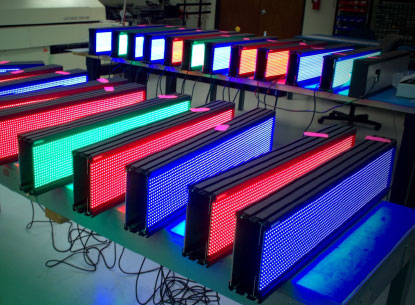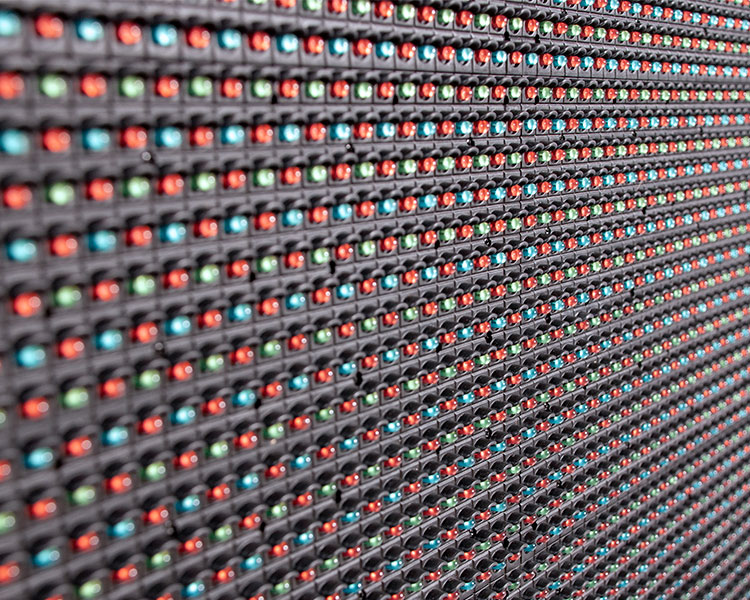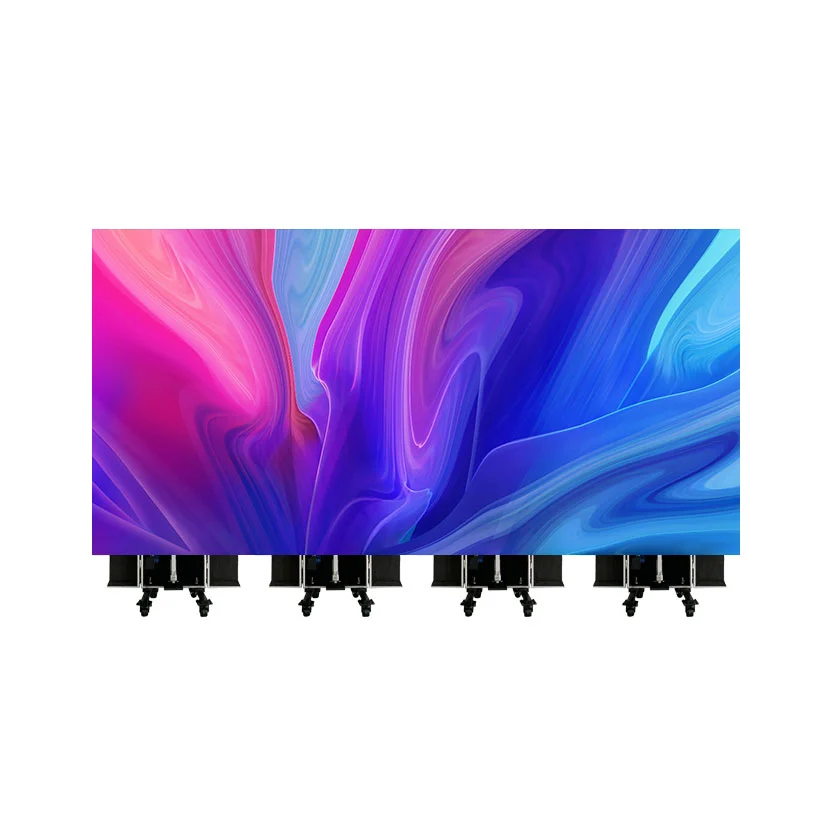Good Reasons To Selecting Led Rental Screen
Wiki Article
When Looking At Led Displays, How Important Are The Pixel Pitch & Resolution?
When looking into LED displays, resolution and pixel pitch are two important aspects to be considered. Both of these factors directly affect the clarity and detail of the display as well as the overall visual experience. These two components are vital for a variety of reasons.
1. Image Quality
Pixel Pitch refers to the distance from the center LED pixel to that of the next. The smaller the pixel pitch, it means that LEDs are closer spaced, resulting in greater resolution and higher pixels densities. This directly translates into clearer and more precise images.
Resolution: The resolution refers to the amount of pixels on the display. It's usually expressed as width x height e.g. 1920x1080. Higher resolutions allow the display to show more detail and creates a more immersive experience. This is particularly true for large screens where viewers are situated close to the display.
2. Viewing Distance
The pixel pitch is in direct correlation with the ideal viewing distance. A smaller size of pixel (and consequently a greater resolution) are essential for displays that will only be viewed at close range. This is the case for indoor screens, such as those used in retail, or for exhibitions. If the display will be viewed far enough away the display will not be affected if there are larger pixels.
3. Content Versatility
Displays with smaller pixels and a higher resolution are able to display a range of content. These include high-definition videos, intricate graphics, and tiny text. This flexibility is crucial for applications that require fluid content like broadcast studios or digital signage.
4. Costs
Yes, having a smaller size of pixels can produce better images, but the cost to make the display will increase significantly. Higher resolution screens are more costly to manufacture due to the greater number of LEDs required. In order to achieve the perfect balance between high resolution and budget you must consider the needs as well as the distance of the screen to be viewed.
5. Application Specificity
The significance and importance of pixel pitch may differ according to the software you're using:
Indoor Displays (for instance, 1.2mm – 2.5mm pixel pitch): These displays require smaller pixels in order to offer high-quality at close distances.
Outdoor displays - Could be larger in pixels (e.g. an resolution of 4mm-10mm) as they are seen from a greater distance, and high resolution may not be required.
6. The durability and upgradability
As the advancement of display technology and display technology improves, the pixel pitch will diminish, allowing higher resolutions even in smaller areas. By investing today in a screen that has best pixel pitch that are more efficient and useful for a longer time. This will reduce the need to replace screens often.
Conclusion:
The pixel pitch is an important factor in an LED display’s performance. It influences the quality of images, the experience of viewing, as well as content versatility. Be aware of these aspects when looking into LED display options based on your application as well as the budget and audience you're considering. View the best 3d led display for blog advice including video walls, board led, tv the wall, led screen panels, video walls, screen led display, flexible led display screen, advertising tvs, led panel rental, outdoor led screen and more.

What Is The Importance Of Refresh Rate When Choosing Led Displays For Your Company?
What's the importance of the refresh rate when studying LED displays? Here's why refresh rate matters:
1. Image Clarity Smoothness, Smoothness and Image Clarity
Definition The term "refresh rate" refers to how many times per second that the display (measured as Hertz orHz) changes its image. Higher refresh rates mean smoother motion as well as less flickering.
Important The high rate of refresh (3,840 Hz or higher) is crucial for displays that display video content, animations or images that are fast-moving. This ensures the motion appears smooth, with no stuttering or tears. This is important in applications such as digital signage, stadiums for sports and concerts where a smooth and fluid visual experience enhances the viewers' experience.
2. Flicker-Free Performance
Flicker. Displays with low refresh rates produce noticeable flickering. Particularly when viewed through a video camera or slow-motion video. Flicker can cause fatigue and strain on the eyes which makes the display less pleasant to use for long periods of time.
Application: High refresh rates are ideal for settings where displays will be filmed. This includes broadcasting and studios for events. They minimize flickering, and ensure that content is clearly captured with no visual artifacts.
3. Visual Quality of Different Lighting Conditions
Impact on Brightness The impact on brightness can affect the display's performance in different lighting conditions. For example, when the lighting is bright, a high rate of refreshment can help keep image quality and consistency. This can reduce any visible flickering, which could affect the effectiveness of the display.
Use: This is beneficial for outdoor stage shows or other events in which the lighting is frequently changed.
4. Content Compatibility
Synchronization: The rate of refresh has to be compatible with the source of the content for example, cameras, video playback systems or live broadcast feeds. If the refresh rate doesn't correspond to the content, it could cause juddering or mismatched images that can negatively impact the experience of watching.
Application: In professional environments like TV studios or large-scale events, where content is being fed through multiple sources, ensuring that the frame rate of refresh is consistent with the frame rate of the content is vital for seamless playback.
5. Get the most enjoyable viewing experience
Motion Handling: High refresh rates are better at handling high-speed content, reducing motion blur and providing an even more clear, detailed image. This is particularly beneficial in applications like broadcasting sports, games, or scenarios where fast-paced action is displayed.
Application High-refresh rates are great for venues hosting sports events, gaming events, or any other action-packed media. They ensure that viewers get to enjoy every detail in full clarity.
6. Reduced Eye Strain
Comfort Low refresh rates may cause eye strain over prolonged viewing times, particularly in situations where people are near the display or when content is watched for extended durations.
Application: Refresh rates that are high are beneficial for offices, retail spaces and public areas. The public could take a long time looking at the display.
7. Performance of Rental and Staging Applications
Adaptability: LED displays used for renting or for staging are usually utilized in various configurations and with different types of content. A high rate of refresh will guarantee that they can be customized to fit any occasion.
Application High refresh rates are beneficial in environments where displays must be able to adapt quickly to changes in content and demands.
Conclusion:
The refresh rate is a crucial factor that directly affects the visual quality as well as the comfort and flexibility of LED display. This is crucial for applications involving dynamic content, live events or situations in which the display is used for prolonged periods. If you are researching LED display options for your application, take a look at the rate of refresh. This will ensure that the display operates smooth and without flicker, which will enhance the experience of viewers. Read the top led rental screen for site advice including board led, outdoor led screen, led screen transparent, led a board, led screen, advertising displays, wall tv, advertising displays, led display screen rental, display screen led and more.

What Is The Significance Of Color Accuracy And Calibration In Research On Led Display?
The accuracy of the color of LED displays is vitally important especially when it comes to applications that focus on the integrity of brands and quality of visuals. Here are some reasons why these factors matter.
1. Realism, Visual Quality and authenticity
Color Accuracy: How faithfully does an LED display replicate the colors used by content creators? High-quality color accuracy guarantees that images and videos look authentic and vibrant and appear like they should without distortion or unwanted shifts.
Important: In applications such as advertising, broadcasting retail, professional presentations, accurate reproduction of colors is vital to maintaining the visual aesthetics of the content and delivering the intended message effectively.
2. Brand Integrity
Consistency in Branding Businesses that rely on specific color schemes for their branding it is vital to ensure that the colors are accurate. Colors that are not accurate can be used to misrepresent an image or harm its image.
Application: To ensure consistent brand presentation across platforms, it is crucial to keep brand colors precisely.
3. Impact and Engagement of Audience
Displays that are more accurate in color offer a more enjoyable viewing experience. Correct colors help communicate emotions and messages more effectively, enhancing the impact of the overall message.
Application for the entertainment industry, museums, or any other place where the content is created to trigger an emotional response, color accuracy ensures that the audience experiences the content in the way it was intended.
4. Content Creator Intent
Designers, artists or content creators, as well as others typically spend a lot of effort to create visuals using particular colors. Displays that accurately replicate these colors will ensure that the work of designers, artists and content creators are displayed in the way they intended.
Application: For fields like digital arts, photography, or film, where colors play a key role in storytelling and aesthetic appeal, it's crucial to ensure that the colors are accurate. This is in keeping with the ideas of the artist.
5. Calibration of Consistency
Uniformity Across Panels: Calibration assures that each LED panel within a display are consistent in color and brightness levels, which prevents any visible seams or mismatches. This is vital for large-scale, multi-panel displays.
Even the most sophisticated displays will fade in color over time. To maintain consistency and meet standard of quality periodic calibration is necessary.
Application For large video walls, video walls outdoors, or multi-panel systems, calibrating is crucial to ensure an even and smooth appearance. This is crucial for high-profile and professional installations.
6. Effect on the types of content
Different content needs Different types of content require different requirements for color accuracy. As an example medical displays have to be precise in order to give a proper diagnosis, while displays for advertising could be more concerned with vibrancy and saturation.
Application Specialization: In fields that are highly specialized, such as in medical imaging, design or retail stores with high-end products the ability to precisely calibrate colors ensures the display will be able to meet the requirements of the specific content displayed.
7. Technology and Specifications
Bit Depth (and Gamut) Displays that have high bit depths as well as displays with wide color spectrums (like DCI P3 or rec. 2020) offer better color accuracy and can produce a wider spectrum of colors. It is essential to know these specifications before deciding on a display where color precision is vital.
Advanced Calibration Tools: Modern LED displays often come with advanced calibration tools and software that permit precise adjustments to ensure that the display is accurate throughout the time.
Application: For businesses where accuracy of color is a must like graphic design, film production and advertising that is high-end investing in displays that have superior color accuracy and calibration capabilities is essential.
Conclusion:
To ensure that LED displays deliver images of superior quality that conform to brand standards and true to the content creators goals, accuracy in color and calibration is crucial. Whether the display is used for advertising, entertainment, professional presentations, or for specialized fields such medical imaging, accurate color reproduction is crucial to achieving the desired impact and maintaining the integrity of the image. It is important to ensure that color accuracy is maintained and making sure that LED displays are calibrated when looking into the possibilities, especially in cases where you require exact colors or consistent performance. Follow the best outdoor fixed led display for blog advice including led outdoor display screen, led light sign board, outdoor led screen display, flexible led display, led screen display rental, led in walls, led rental screen, transparent led screen display, outdoor digital display, transparent led display screen and more.
